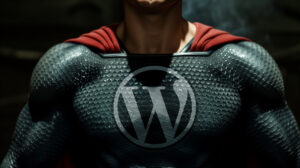RFPs are usually jam-packed with all sorts of questions, but the question overshadowing the whole thing is “what will the project cost?” Every clear answer you give in a sales process is an opportunity to build trust, and trust is the biggest invisible factor in every prospect’s decision making process. So if every question is a trust building opportunity, answering the biggest question is the greatest trust building opportunity of them all.
And yet, in most sales processes, usually both the client and the agency engage in the pricing dance. The client doesn’t want to reveal their budget, and the agency wants to maximize the value of the opportunity (or just avoid going underwater on the project). But dancing around the biggest question is the opposite of building trust!
This is why HOLTER Strategic provides a detailed pricing page on our website, because putting your pricing cards on the table, at the front end of a sales process, is a HUGE gesture of trust.
But even on our pricing page we have to use price ranges. It takes careful evaluation to peg any particular project to the right price within those ranges. So in this introduction we’ll do an overview of the various cost centers of website pricing, and then we’ll dive deeper into each facet over the next few videos.
So what are the most relevant factors in determining a website project’s cost? Well, the big cost centers include: Page Count, Content Density and Complexity, Visual Design Requirements, Advanced Features (like e-commerce, event management, CRM integrations, faceted search and others), and to a lesser extent Accessibility Requirements. And then there’s one more intangible aspect to pricing, which is the makeup of the client team.
In this first video on the subject of pricing I’m going to start with this client team aspect, and then briefly describe the others.
Every project team has their own unique properties and personalities. And each member of the team will have widely varying levels of technical understanding.
So, on one end of the spectrum you might have one client contact, who has complete decision making authority, is decisive—provides immediate feedback, and who’s been involved in other website development projects before. In this kind scenario you could justify discounting a project fee.
On the other end of the spectrum, you might have a large team with members from multiple different departments, who have very little technical knowledge, and never been involved in a web project. The team dynamics might ensure that everyone weighs in on every issue, and where feedback comes in slowly, from many multiple perspectives, and sometimes even includes contradictory feedback. Making matters worse, none of these team members has final decision making authority, rather some other director or board member, who doesn’t even sit in on the project meetings will need to approve progress only after major project milestones have been met. In cases like these—a project fee might need to be doubled or even tripled to account for the profound liabilities of such a team profile.
I’ve been involved in projects at both ends of the spectrum. But in most cases the client team is somewhere in between. And so these team-based dynamics have to be taken into account for each project. This is another reason why engaging in Q&A helps position projects for success, because you can begin to get a read on the client and ask questions about the process on the client side.
Now let’s quickly break down the other cost centers I mentioned, and we’ll dive into more detail over the next few videos.
The first main cost center is Page Count. While this is a real factor, it’s not as big of one as you might think—since these days almost every website project relies on some form of database-driven content management system like WordPress. And once you’ve built out the theme, adding more pages and posts doesn’t necessarily add much more time to a project. That said, there are other ways a general page count can affect costs, and we’ll review those in the next video.
The second cost center is Content Density and Complexity. And this can actually have a much bigger impact on costs than page count might. A site with relatively few pages, but they include lots of structured charts and tables, or long form, multimedia content—that can have a significant impact on the project’s budget. Conversely, a site with hundreds of pages, but most contain just short simple blocks of text and images, a high page count might not affect the price much at all.
The third cost center we’ll dive into relates to visual design requirements. This is also somewhat intangible at the front end of a project. And I’ll admit that this is one case where using an RFP may have an upside—if the RFP includes sample websites that the client likes. Site examples can be a gauge for design expectations. Do they list sites with tons of animations, complex layouts, and lots of front end polish? Or does their taste tend toward simpler designs, with more standard website layout conventions.
The fourth cost center relates to Advanced Features such as e-commerce, event calendars, API integrations with CRMs or other third party platforms. Usually, these advanced implementations can be given individual line items in a proposal—so clients can see how they contribute to the overall project costs.
Lastly, I noted accessibility requirements as another cost center. Making a website accessible to the vision impaired, or those with other disabilities can potentially add significant costs deepening on the level of compliance level.
In the next few videos we’ll dive deeper into each of these different cost centers.
Until then, Be Clear. Build Trust. Win Clients.



